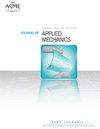网球撞击致头部损伤的计算研究
IF 2.8
4区 工程技术
Q2 MECHANICS
引用次数: 0
摘要
摘要对网球撞击引起的头部损伤进行了计算研究。利用已建立的全身模型和新构建的网球模型,模拟了两件式网球对人体头部的冲击。用已有的实验数据对新网球模型进行了验证。首先研究了网球以25m /s的速度对人头部的正面撞击作为基线情况。然后研究了撞击位置、速度、角度以及球的旋转对撞击的影响。结果表明,侧碰撞导致头部损伤的风险高于正面和冠碰撞。此外,颅骨的冲击力和von Mises应力、颅内压和第一主应变以及头部重心处的平移加速度和旋转加速度均随着冲击速度的增加而增加。此外,正常(90度)的撞击对头部的伤害风险最高,其次是60度、45度和30度的撞击。此外,观察到网球的旋转对头部反应的影响不显著。模拟结果表明,在基线情况下,不会出现颅骨骨折或轻度脑损伤。然而,当撞击速度超过40 m/s时,可能会发生创伤性脑损伤。目前的研究结果为网球撞击引起的头部损伤风险提供了新的见解。本文章由计算机程序翻译,如有差异,请以英文原文为准。
Head Injuries Induced by Tennis Ball Impacts: A Computational Study
Abstract Head injuries induced by tennis ball impacts are computationally studied. The impact of a two-piece tennis ball on a human head is simulated by using an established full body model and a newly constructed tennis ball model. The new tennis ball model is validated against existing experimental data. The frontal impact of a tennis ball on a human head at a velocity of 25 m/s is first studied as the baseline case. The effects of the impact location, velocity, and angle as well as the ball spinning are then examined. It is revealed that the lateral impact results in a higher risk of head injury than the frontal and crown impacts. In addition, it is found that the impact force and von Mises stress in the skull, the intracranial pressure and first principal strain in the brain, and the translational and rotational accelerations at the center of gravity of the head all increase with the increase of the impact velocity. Moreover, the normal (90-deg) impact has the highest risk of head injury, which is followed by the 60-deg, 45-deg and 30-deg impacts. Further, it is observed that the spinning of the tennis ball has insignificant effects on the head response. The simulation results show that there will be no skull fracture or mild brain injury in the baseline case. However, traumatic brain injuries may occur after the impact velocity exceeds 40 m/s. The findings of the current study provide new insights into the risks of head injuries induced by tennis ball impacts.
求助全文
通过发布文献求助,成功后即可免费获取论文全文。
去求助
来源期刊
CiteScore
4.80
自引率
3.80%
发文量
95
审稿时长
5.8 months
期刊介绍:
All areas of theoretical and applied mechanics including, but not limited to: Aerodynamics; Aeroelasticity; Biomechanics; Boundary layers; Composite materials; Computational mechanics; Constitutive modeling of materials; Dynamics; Elasticity; Experimental mechanics; Flow and fracture; Heat transport in fluid flows; Hydraulics; Impact; Internal flow; Mechanical properties of materials; Mechanics of shocks; Micromechanics; Nanomechanics; Plasticity; Stress analysis; Structures; Thermodynamics of materials and in flowing fluids; Thermo-mechanics; Turbulence; Vibration; Wave propagation

 求助内容:
求助内容: 应助结果提醒方式:
应助结果提醒方式:


